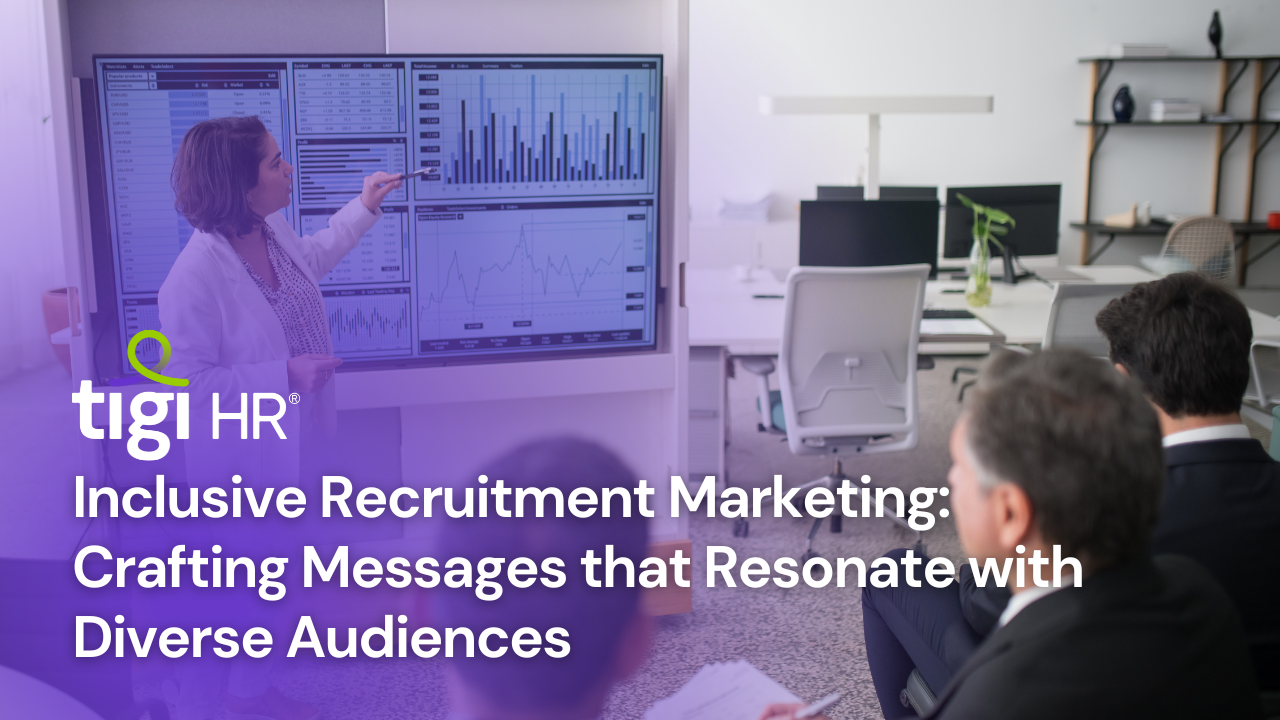In today’s rapidly evolving business landscape, diversity and inclusion have emerged as critical components of success for any organization. As companies strive to create a workforce that reflects the rich tapestry of society, their recruitment efforts must adapt accordingly. Inclusive recruitment marketing, the art of crafting messages that resonate with diverse audiences, has gained prominence as a powerful strategy for attracting top talent. This article explores the importance of inclusive recruitment marketing, provides insights into effective strategies, and highlights authentic statistics that underscore the significance of this approach.
The Significance of Inclusive Recruitment Marketing
Inclusive recruitment marketing is more than just a buzzword; it is a strategic imperative that aligns with the values of today’s job seekers and empowers organizations to harness the benefits of diversity. According to a Glassdoor survey, 67% of job seekers consider workplace diversity an important factor when considering employment opportunities[^1^]. Moreover, companies with diverse teams are 35% more likely to outperform their industry counterparts[^2^]. These statistics reveal that diverse candidates are not only seeking inclusive workplaces but are also attracted to companies that actively prioritize diversity and inclusion.
Understanding Diverse Audiences
To craft messages that resonate with diverse audiences, recruiters must first understand the nuances of these groups. Diversity extends beyond ethnicity and includes factors such as gender, age, sexual orientation, disabilities, and more. Tailoring recruitment messages to address the unique needs and aspirations of each group demonstrates an organization’s commitment to inclusivity.
Strategies for Crafting Inclusive Recruitment Messages
- Language Matters: The language used in recruitment materials can inadvertently exclude certain groups. Opt for gender-neutral language and avoid terms that may have cultural or gender-specific connotations. Use inclusive terms like “they/them” instead of assuming gender pronouns.
- Showcase Diversity: Highlight your commitment to diversity by featuring stories of employees from different backgrounds. This not only reflects inclusivity but also provides potential candidates with relatable role models.
- Benefits of Inclusivity: Emphasize the benefits of diversity in your messaging. Studies show that diverse teams are more innovative and better at problem-solving[^3^]. Mention how diverse perspectives drive creativity and enrich the workplace environment.
- Accessible Materials: Ensure that your recruitment materials are accessible to individuals with disabilities. Use alt text for images and provide captions for videos to make your content universally usable.
- Inclusive Imagery: The imagery you use should reflect a diverse range of individuals. This includes people of different ethnicities, ages, abilities, and gender expressions. Representation matters and can help candidates envision themselves within your organization.
- Highlight Inclusive Policies: If your company has specific policies promoting inclusivity, such as flexible work arrangements, parental leave, or affinity groups, make sure to highlight them in your messaging.
Authentic Statistics and Insights
- Diversity’s Impact on Innovation: A Boston Consulting Group study found that companies with diverse management teams reported 19% higher revenue due to innovation[^4^]. This statistic underscores the direct correlation between diversity and an organization’s bottom line.
- Ethnic Diversity and Financial Performance: McKinsey’s analysis revealed that companies with ethnically diverse executive teams were 33% more likely to outperform their peers in profitability[^5^]. This statistic demonstrates the financial implications of ethnic diversity at the leadership level.
- Gender Diversity and Decision-Making: A Peterson Institute study showed that companies with at least 30% women in leadership positions had 15% higher profitability[^6^]. This highlights the positive influence of gender diversity on key business decisions.
- Inclusive Job Descriptions: Inclusive language in job descriptions can lead to a more diverse applicant pool. Textio, an AI platform, found that inclusive wording increases female applicants by 42% and underrepresented minority applicants by 27%[^7^].
- Generation Z’s Focus on Diversity: Generation Z, the upcoming workforce, considers diversity a key factor when evaluating employers. Deloitte’s survey revealed that 47% of Gen Z respondents cited diversity and inclusion as important when choosing where to work[^8^].
Conclusion
Inclusive recruitment marketing is not only a moral imperative but a strategic advantage that fosters innovation, creativity, and financial success. By understanding diverse audiences and crafting messages that resonate with them, organizations can attract top talent from all walks of life. The statistics and insights presented in this article provide a compelling case for investing in inclusive recruitment strategies. As the workforce becomes more diverse, companies that prioritize inclusivity in their recruitment efforts will position themselves for long-term success in an evolving global landscape.
1: Source: Glassdoor Survey, 2019
2: Source: McKinsey & Company, “Delivering Through Diversity” Report, 2018
3: Source: Harvard Business Review, “Why Diverse Teams Are Smarter,” 2016
4: Source: Boston Consulting Group, “How Diverse Leadership Teams Boost Innovation,” 2018
5: Source: McKinsey & Company, “Diversity Wins: How Inclusion Matters,” 2020
6: Source: Peterson Institute for International Economics, “Is Gender Diversity Profitable? Evidence from a Global Survey,” 2016
7: Source: Textio, “The ROI of Gender-Neutral Language in Job Ads,” 2019
8: Source: Deloitte, “The Deloitte Global Millennial Survey 2019”





